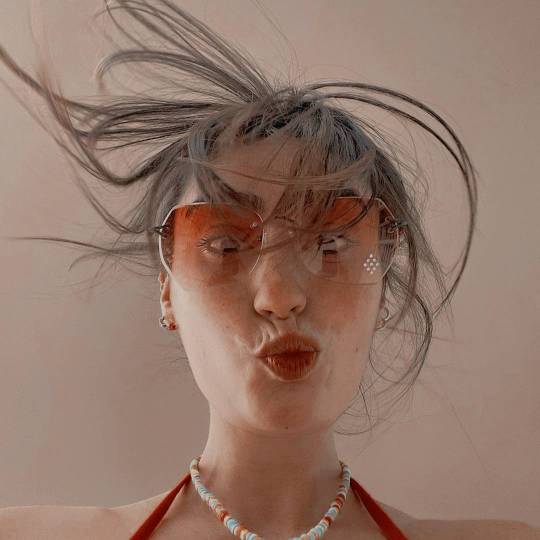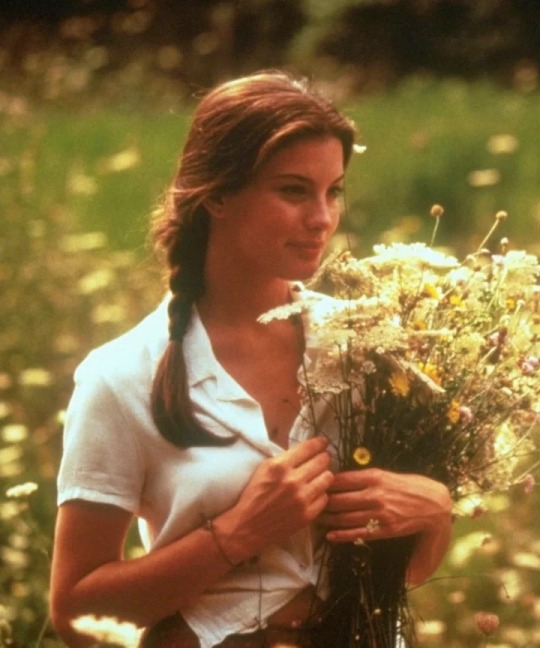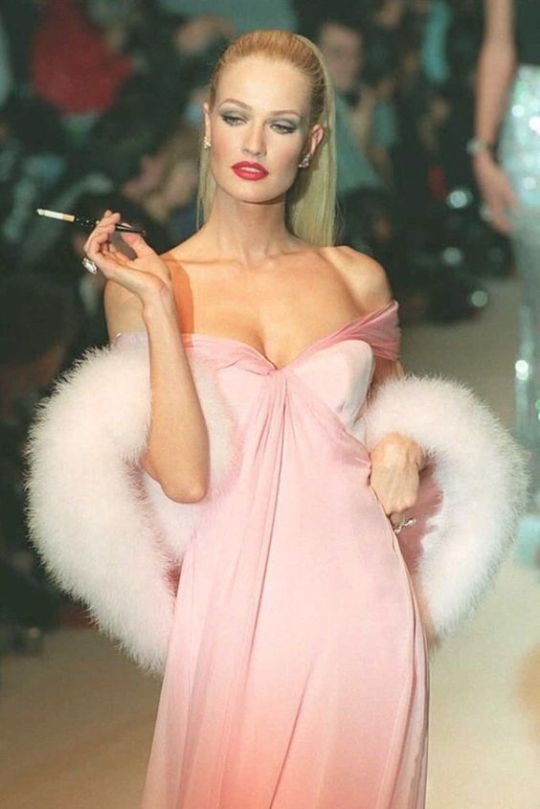#vienna skye icons
Text






vienna skye icons
© must give credit on twitter (@eclecticiccns on twitter)
like / reblog if you use ♡
#random icons#icons#icon#girl icons#model icons#icons site models#icons site model#site model icon#site models#site model girls#girl icon#twitter packs#icon girl#icon girls#aesthetic icon#icons aesthetic#aesthetic icons#model icon#twitter icons#vienna skye icons#vienna skye#icons vienna skye#icons with psd#psd icons#icons com psd
4 notes
·
View notes
Text
the beauty of ardra 💧🌑


💧margot robbie (ardra surya): upper photo
💧emilia clarke (ardra chandra): lower photo
🌑 the nakshatras of the nodes have a very distinctive appearance. the influence of the feminine rahu bestows ardra natives with the typical feminine features, such as delicate facial features, larger eyes, and a voluptuous body. the yin features of rahu gives natives a type of otherworldly and ethereal appearance, similar to that of saturn. this is because both planets are of the air element (for a better understanding of this go to my pushya nakshatra post). these natives typically have large and rounded eyes, dainty noses, and a lighter complexion (depending on the native’s ethnicity, i.e. if a rahuvian woman is of a darker complexion, she may have a slightly lighter complexion than her other non-rahuvian family members).
⭕️ let’s look at rahu’s most evolved state: the shatabisha nakshatra. this nakshatra is symbolized by the empty, yin circle. shatabisha is ruled by varuna, god of the rains, cosmic and terrestrial waters, sky and earth. in addition to the mystical healer, maya (illusion). the nature of shatabisha is also abundant in the other rahu-ruled vimshottari nakshatras (ardra and swati). this is because rahu is the utmost manifestation of the divine feminine. maya, being the embodiment of illusion, betows rahuvian individuals with the power of being an empty vessel for the divine collective; bending reality and transforming into the desires of others the native deems worthy. however, due to rahu’s rebellious nature, we see this powerful feminine force being steadfast and not easily influenced by others.


💧liv tyler (ardra surya): upper photo
💧emily blunt (ardra chandra): lower photo
🌧 ardra is the first rahu-ruled nakshatra. in order to better understand the nature of ardra, we need to take a step back and understand the previous nakshatra—mrigashira. mrigashira was the rejection of the garden of ignorance and the freedom to move on. in ardra, we see the process of forming the rational mind and free will. due to the intellectual nature of rudra, we see ardra natives preferring to study, understand, and learn about the physical world/plane. this often leads to a fascination with the physical plane and understanding the workings of everything that peaks their interest. with the mercurial energy of gemini (knowledge) and rahuvian influence of the vimshottari system (materialism and illusion), we can see the reasoning of ardra’s prevelance in dystopian, horror, and sci-fi films. this nakshatra’s fixation on understanding the world and finding freedom is the perfect combination for creating films with dark subject matter. rudra’s intentionally destructive nature also provides ardra natives with a niche ability to accumulate knowledge to understand the workings of the world and destroy what seems to not be fit. precisely how rudra represents the emotional release and purification that occurs after the storms of the plane or mind cease (more on this later!). this is similar to most character development in many horror/sci-fi films and the ever present devil/savior trope. if you’re interested in further looking into this dichotomy, i recommend “the exorcist” starring linda blair (ardra chandra), “bedazzled” staring elizabeth hurley (ardra lagna), and “supernatural” starring mark pellegrino (ardra lagna). this trope is also perfectly illustrated by lana del rey’s (ardra surya) music. in her earlier albums, “born to die”, “paradise”, and “ultraviolence”, the singer describes her natural love of the darker things in life (i.e. drugs, violence, guns). as her albums progress, we see her slowly become more aware of the dangers of her lifestyle and her slowly moving towards love and kindness instead—much like rudra’s symbolism of calming after the tumultuous storms of life. i highly recommend listening to her music to gain an understanding of ardra’s themes!


💧karen mulder (ardra surya): left photo
💧victoria beckham (adra lagna): right photo
🦮 ardra is heavily associated with animals. it is symbolized by the female dog yoni. this is indicative of ardra’s devotional, emotional, and knowledgeable nature. rudra is the ruler of this nakshatra. rudra desired to become “the lord of the animals”. this nakshatra also has the same animalistic dominion desire of uttara phalguni and revati. this is because the yonis of all three nakshatras are the female dog (ardra), female cow (uttara phalguni), and female elephant (revati). this may be indicative of the motherly, animalistic nature of all three nakshatras. this is also why all three nakshatras get along so well. the animalistic nature of ardra is why we see hundreds of ardra natives in animal prints, fur or leather, or animal symbolism via graphic tees or headbands; similar to the reoccurring cow print in uttara phalguni fashion!


💧vienna skye (ardra surya): upper photo
💧ariana grande (ardra surya): lower photo
🍀 another reoccuring style theme for ardra was the appreciation of 60s fashion, particularly the mod era of the 60s. time and time again, when doing my research for this post, i saw a multitude of ardra natives dress up/try to emulate 60s fashion. ardra natives such as ariana grande’s (ardra surya) 60s-inspired fashion in her most recent music videos (i.e. “34+35”) and chrissy tiegan’s (ardra lagna) multiple 60s themed events. i believe this behavior is due to rahu’s extreme prevalence in old hollywood and the 1960s’ modeling industry. for example, hedy lamarr (ardra lagna) was a prominent actress and inventor, jean shrimpton (swati surya) was an icon of swinging london and very popular model in the 60s, and pat cleveland (ardra surya) was a very well-known model who was the muse of every prominent fashion house in paris. i believe ardra natives try to emulate this era of fashion because of ardra’s appreciation of all things old and vintage, which appears to the nature of many of the rahuvian and ketuvian individuals. an additional thing to note is the prevalence of the color green in the ardra nakshatra. in hindu/vedic astrology, a particular type of color is dedicated to a certain nakshatra in which is lucky for the natives of the nakshatra to wear. green, being the color that symbolizes the fresh, succulent nature of rudra, is why the ardra natives shown above, vienna skye and ariana grande, are both wearing the color green. this also correlates to how many ardra natives have dyed their hair green shades or hues, i.e. gwen stefani (ardra chandra), nicole richie (ardra chandra), and rapper saweetie (ardra surya).


💧kaya scodelario (ardra chandra): upper photo
💧emma mackey (ardra chandra): lower photo
🎸 all nodal nakshatras tend to have a propensity for darker elements and themes in the media. this can be reflected in ardra’s love for grungy, smoky makeup; darker clothing; and vampy, vintage hair and fashion looks (much like the magha nakshatra). this darker aesthetic was also heavily popular in the 90s/2000s. most notably, lizzy caplan (ardra surya), who played janis ian in “mean girls”, her character was well known for her liking of punk subculture, heavy eye makeup, and band merchandise, a trait that was also common with the characters played by ardra natives: kaya scodelario (ardra chandra) in “skins” and emma mackey (ardra chandra) in “sex education”. this behavior is prevalent in the ketu and rahu natives because it reflects the smoky and tamasic nature of both shadow planets. by rejecting the more popular, mainstream trends for the purpose of embracing more expressive and alternative movements (such as grunge, punk, rock, alternative, etc.). this why we see the nodal nakshatras so prominent in those subculture musical genres (i.e. ardra natives kurt cobain of “nirvana” and jimmy page of “led zeppelin”).
as always, i am open to any constructive criticism! i tried to touch on both the appearance, fashion and nature of ardra and i hope i did well! this post took me forever to make and i truly tried to put so much effort into it! i just adore ardra’s emotional, purposefully destructive, raw and feminine energy its natives tend to reflect 🌩 if you are looking for more information about ardra, get to know the overrulers and supreme deities of rahu, durga (the goddess of power) and the serpent god, and mercury, vishnu (the maintainer) and narayana (the cosmic person)!! if any of my placements or information is incorrect please feel free to let me know! also, i am fully aware of the origins of vedic astrology and if i was in anyway disrespectful to hindu culture, i will take down this post immediately xx
* all of these placements were found using astrotheme/.com and/or astro-charts/.com. it is important to note that some chandra (moon) placements may be off by up to 6 degrees and lagnas (risings) as well, due to the fact that many websites do not have a 100% accurate birth time for the given celebrities.
* i take no credit for the invention of vedic astrology-based appearance profiles. please watch claire nakti on youtube or look into @/cn0bles, @/lovejustlied, @/dh4nishta, and @/vanillemercure on twitter for more in-depth analysis on vedic astrology xx
#vedicastrology#gemini#ardra nakshatra#nakshatras#mercury planet#maya#gemini moon#budha#north node#rahu ketu#gemini aesthetic#grunge#60s aesthetic#astrology#astro notes
602 notes
·
View notes
Text
How Our Travel Adventures Will Change in 2020
(Bloomberg) –The 2010s were the decade when travel became easier. The arrival of short-term lodging services, the embrace of “second cities,” and the rapid growth of budget airlines both shrunk our globe and made it more intriguing. And the siren song of social media sent us to far-flung corners in search of “authentic,” “local,” and “undiscovered” places, or (contrarily) to recreate influencers’ brilliant snaps.
But if travel became something of a competitive sport in the last 10 years, it’s starting to loosen up. As it turns out, trying to visit every country in the world before turning age 40—or simply checking off three bucket-list cities in a weeklong trip—is exhausting. The overwhelming number of booking channels and sources of inspiration has left travelers confused, too, struggling to figure out how to maximize every minute of their precious vacation days.
That’s why “slow travel,” which lets you get under the skin of a place by simply staying put there for a little longer, is gaining traction. The idea doesn’t just make for more restful time off, it’s also more environmentally sustainable and fulfilling. It underscores the majority of the trends that will reshape the way we think about our adventures in 2020 and beyond.
Enjoy Zero-Footprint Travel
We’ve already told you about carbon offsets and how it’s getting easier to properly offset your flights. But in 2020 that trend will go much further.
Cool Effect, the company we like best for carbon offsets, will release tools to help you offset the carbon footprints of your cruise vacations. Several airlines, including EasyJet, are setting goals to offset their entire fleets’ emissions. And tour operators are getting in on the act, making sure that our footprint on the ground nets out, too. Leading the pack is Natural Habitats, which in 2019 began offering zero-footprint itineraries. Now the company is one-upping that idea by offsetting travelers’ entire lives for a full year if they book one of its Climate Change & Our Wild World trips. (The offset calculations are based on home size, electricity bills, monthly expenses, and air and driving miles.) Led by experts from the World Wildlife Foundation, travelers can venture to see such spectacles as the whale migration in Cabo, the Amazon rainforest, or polar bears in the Arctic.
Other companies that are offsetting trips in 2020 include Metropolitan Touring (which runs wonderful tours and hotels in Colombia and Ecuador) and MSC Cruises. There’s also Intrepid Travel, which is aiming to be carbon negative in the year ahead rather than simply carbon neutral.
Gardens Are the Hot New Hotel Amenity
There isn’t a lot of idyll in our hyperdrive lives, and maybe that’s why gardens are becoming an increasingly popular hotel feature. It sounds quaint, almost boring—and yet that’s the whole point. You can already commune with nature this way in places like Gleneagles, the iconic Scottish estate which just redid its grounds to highlight more authentic local plants and flora rather than imported flowers. At the 300-year-old Dromoland Castle in Ireland, also fresh off a big renovation, you can go on official garden tours with the property’s head gardener, Dorothy Madden.
But rambling grounds are expected in that part of the world. Better proof of the trend lies in the Hamptons, where the new Shou Sugi Ban house puts a spotlight not on the ocean but on meditative Japanese gardens designed by landscape architect Lily Kwong. Or in Marrakesh, where the rambling Royal Mansour includes 3.7 acres by Luis Vallego, who’s been honored with the Order of the Rising Sun from the Emperor of Japan for his work with bonsais. To better highlight its Andalucian-inspired jardin, the hotel is expanding its grounds to include a “nest” where guests can have a private dinner surrounded by palms, vines, and aromatic plants.
The most spectacular example will be just outside Paris, where the new Airelles Château de Versailles will let guests sleep in the palace so beloved for its almost 2,000-acre gardens. Much of the experience will be oriented toward the epic green space—even the Alain Ducasse restaurant on-site will be housed in a glassed-in orangery that trains your eye constantly outdoors.
Your Vacation Will Start Before You Leave Home
If you book a villa at Rosewood’s Las Ventanas al Paraiso in Los Cabos next year, and if you live in select cities including Chicago, New York, and San Francisco, your stay will begin before you head to the airport: The property is arranging for butlers to greet you at your front door, drive you to your departure hub, and treat you to all sorts of personalized goodies along the way. It’ll also offer the service on the way home to prolong the joy of being on vacation as long as possible.
Similarly, Hawaii’s new Mauna Lani will offer a “pre-arrival experience” when it opens in January, such as sending guests a customized, special-edition Arlo Skye suitcase enclosed with invitations for guided, stand-up paddleboard classes.
Will either of these services deliver something that wealthy travelers need? That’s not so clear. But the race has begun to extend the hotel experience far beyond the limits of the physical property.
All-Inclusive Will No Longer be a Four-Letter Word
Several of the biggest hotel openings for 2019 were of an unusual variety: all-inclusive luxury resorts. But they weren’t exactly branded as such.
Blackberry Mountain opened in February with rates that include everything from meals to hand-thrown pottery and aerial yoga classes. That’s in contrast to its older sibling, the hyperluxurious Blackberry Farm, which charges $175 for a tree-climbing session, $250 for stand-up paddleboarding, and $250 for a seven-course dinner with wine pairings. (Interestingly, even with its built-in activities, the newer, less formal property is far less expensive.)
In Chile, the wine-focused, $1,200-a-night Puro Vik is also new and all-inclusive—you won’t be charged a penny no matter how much of their cabernet sauvignon you drink or how much Andean horseback riding you want to do. And when the Shangri-La’s Fijian Resort & Spa on Fiji’s Yanuca Island reopened in April, it became all-inclusive, too, recognizing that most guests who visit are happily confined to its offerings.
Even Marriott International is getting in on the act. It acquired the all-inclusive brand Elegant Hotels in October and is renovating all seven of its Caribbean hotels. Says Marriott President Arne Sorenson, “There is a strong and growing consumer demand for premium and luxury properties in the all-inclusive category.”
If you’ve ever spent $32 for the cheapest glass of wine at your hotel in the Maldives, you know all this is a welcome relief. Sure, some all-inclusive models are meant to guarantee that you’ll spend all your vacation budget in one spot. But by definition, they liberate consumers from attaching dollar amounts to each of their desires—and that, really, is priceless.
Travel Clubs Are Cool Again …
Travel clubs might make you think of old-fashioned agencies and AAA programs selling discount trips through generic brochures, but these days they’re turning into something else entirely. They might be one of the most sophisticated ways to book travel.
Take Inspirato Pass, a subscription that acts like an all-you-can-travel buffet. It starts at $2,500 per month, which includes as many nights as you wish in the company’s partner hotels, luxury homes, or even on cruise ships. Certain exclusive experiences, like VIP access to marquee sporting events, are also included. (If you want to book more than one trip at a time, or travel with more than your partner or spouse, the cost gets incrementally higher.)
Third Home, a mansion-sharing platform for people with extraordinary vacation homes, offers its Reserve club that is, well, reserved for those with the most extravagant digs. Members are invited to rent one another’s properties (minimum value: $5 million) at a steep discount.
And then there’s Prior, a membership club for the culturally curious. In its second year, the company is continuing to expand its “Nomadic Clubhouse” events, similar to intimate, members-only parties in spectacular settings. One will celebrate the Hindu festival of Holi at the invitation of the Maharaja of Jaipur; another will spend a long weekend in Uruguay eating fire-cooked meals prepared by the legendary chef Francis Mallmann.
… And So Are Hotel Clubs
For years, hotels emphasized the importance of getting locals in their doors—both to drive ancillary revenues at restaurants and to infuse them with an “authentic” vibe. Now that hotels are legitimate hangouts, the best of them are offering their most alluring spaces only to those who pay up.
See Aman Resorts, whose Manhattan property opens this year with $50 million condos and its first members club. Those who sign up will have exclusive access, along with guests and residents, to the hotel’s three-story spa. Other properties are making similar moves, including the Six Senses (also in New York), the Dorchester Dubai, Auberge’s Commodore Perry Estate in Austin, Texas, and the Almanac Vienna, all opening with membership clubs in the coming year. In some cases, they’re focused on spa and wellness offerings; in others, it’s more about access to frequent events programming and dedicated “living-room-style” areas. Think of them as Soho Houses—with a dash less attitude yet more exclusivity.
Spas Will Become Extremely High Tech
Somadomes, Bod Pods, virtual reality wellness—if you have no idea what these things mean, you will soon. The latter has just debuted at the Four Seasons Resort Oahu, where a spaceship-like device called Sensync claims to “reset” spagoers’ brains by manipulating all five senses. During the 20- to 80-minute journey, a virtual reality headset “takes” guests to deep space, ocean coves, or zen gardens, while the machine pumps out related sounds and smells, simulates things like wind and temperature, and uses real-time data about your respiration and heart rate to guarantee that you’re calming down. The Somadome at Ojai Valley Inn is similar—it’s also a self-contained pod—but focuses instead on meditation and light therapy.
Other spa offerings will be more medical in nature. Gstaad Palace has joined with Cellgym to help clients adjust to Alpine altitudes before their first ski day; treatments involve breathing oxygen-reduced air through a mask, as submarine crews and top athletes sometimes do while training. At the Dolder Grand in Zurich and Four Seasons New York Downtown, aestheticians use confocal miscroscopes to learn about the pigmentation and elasticity of your skin, then send data to a dedicated research center to create a “prescription” of products customized to your needs. (The process takes three months to complete after your initial consultation, which rules out the ensuing, made-to-measure facial for many casual visitors.) And if all this sounds more stressful than relaxing, don’t worry—you can still get a regular, 90-minute massage at all these spots.
Cruises Are Getting Smaller, Greener—and a Whole Lot Cooler
When the Ritz-Carlton Yacht Collection launches next summer on its maiden voyage, it will be one of several new companies trying to overhaul the way we think about cruising. Across the world, small ships, designed more like boutique residences than floating chunks of Vegas, will make it easier and sexier to see remote coastal places. And no, we’re not talking about 200-passenger vessels already in use by all manner of luxury cruising outfits. These are largely independent, such as the “floating ryokan” Guntu in Japan, which offers contemplative views of the Seto Inland Sea from its sushi bar and 19 suites. There’s also HMS Gåssten, a former Swedish minesweeper (bookable through Red Savannah) that’s been restored and turned into a luxe base for skiing and biking trips in Norway’s Sunmore Alps. Add new standards that require cruise lines to cut their emissions across-the-board, and suddenly this mode of travel seems all that more interesting.
The post How Our Travel Adventures Will Change in 2020 appeared first on Businessliveme.com.
from WordPress https://ift.tt/371L9fo
via IFTTT
0 notes
Text






gigi hadid icons
© must give credit on twitter (@eclecticiccns on twitter)
like / reblog if you use ♡
#random icons#icons#icon#girl icons#model icons#icons site models#icons site model#site model icon#site models#site model girls#girl icon#twitter packs#icon girl#icon girls#aesthetic icon#icons aesthetic#aesthetic icons#model icon#twitter icons#vienna skye icons#vienna skye#icons vienna skye#icons with psd#psd icons#gigi hadid icons#gigi hadid#icons gigi hadid#gigi hadid layout#hadid icons#hadid sisters
2 notes
·
View notes